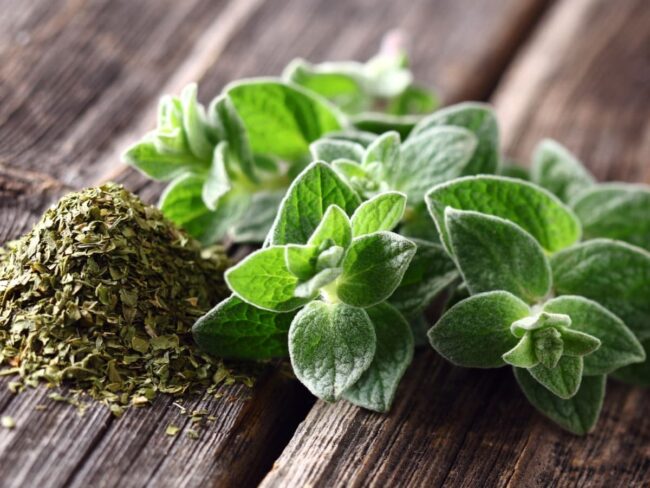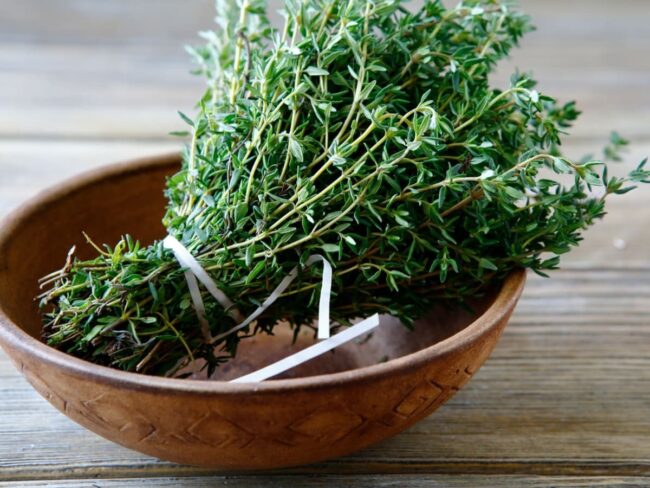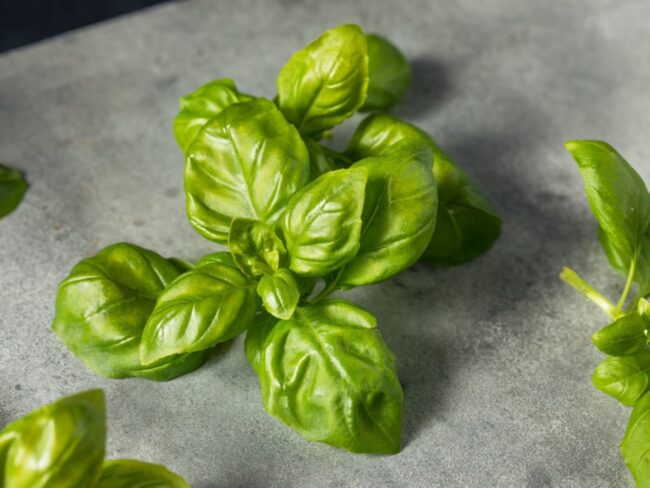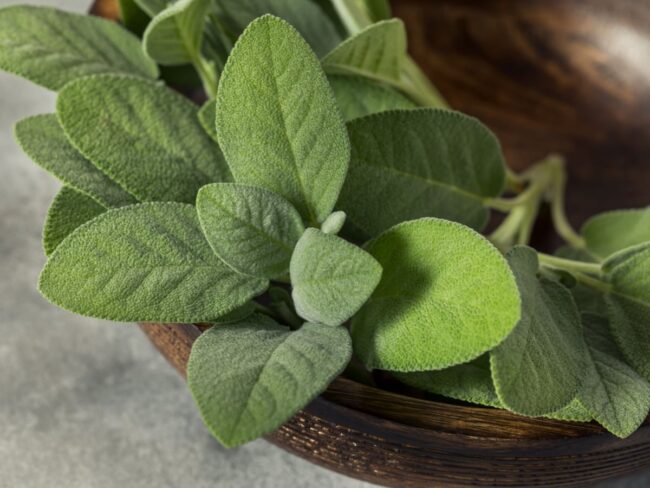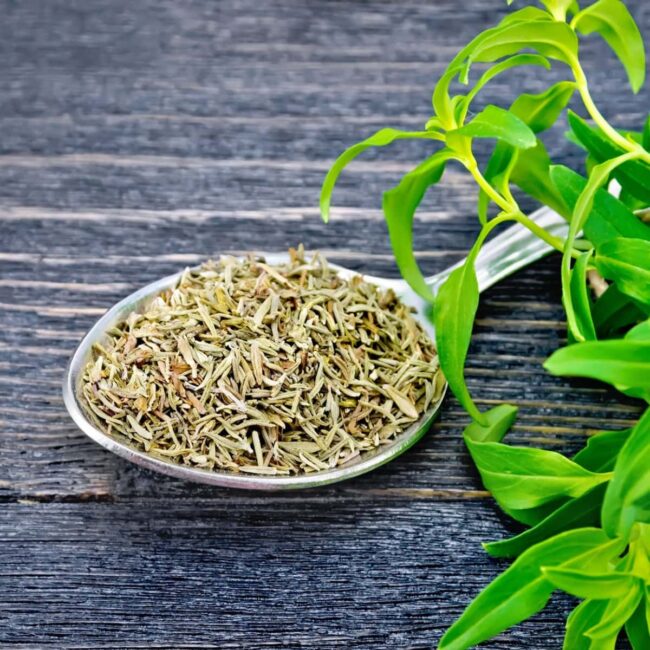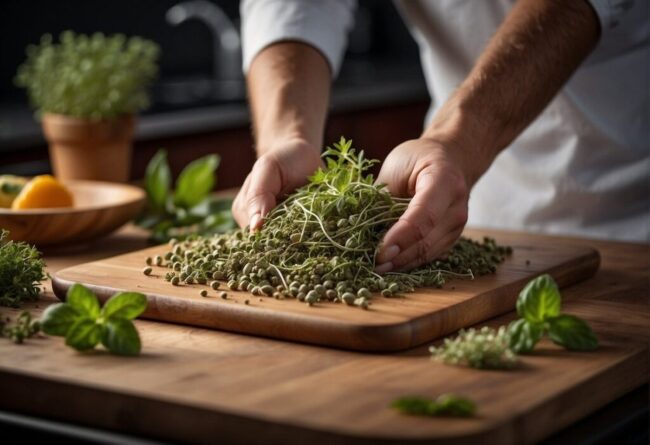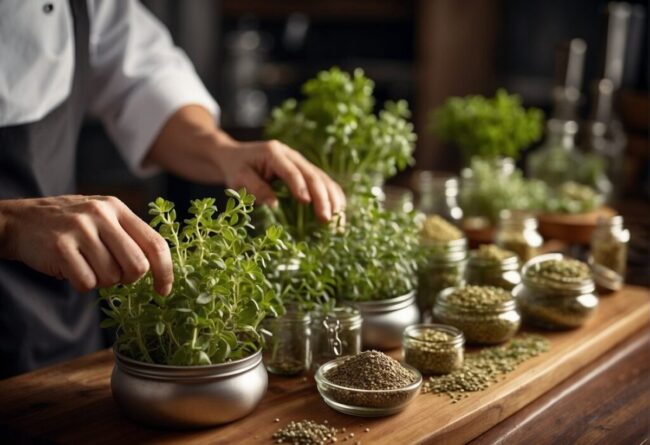5 Fragrant Alternatives to Marjoram for Cooking
Marjoram substitutes bring herbal warmth to recipes when this fragrant seasoning isn’t on hand.
Certain herbs can offer a soft sweetness, while others add a bold, slightly peppery note.
Achieving a well-balanced dish means selecting a swap that complements meats, soups, or sauces effortlessly.
The depth of flavor stays intact without overwhelming other ingredients.
What to Know About Marjoram
Marjoram is a fragrant herb known for its mild, slightly sweet flavor. It is commonly used in Mediterranean and Middle Eastern dishes.
Plant Overview
Marjoram stands out with its sweet, slightly citrusy flavor that adds depth to various dishes.
This herb thrives in warm climates and is often cultivated for both culinary and medicinal uses.
Its leaves are soft and delicate, making them a favorite among chefs looking for subtle yet aromatic enhancements.
When fresh or dried, marjoram brings a wonderful fragrance that elevates soups, stews, and sauces alike.
You might find it an essential addition to your spice cabinet if you enjoy exploring flavors in your cooking adventures.
Taste Characteristics
Marjoram adds a distinctive flavor to dishes, combining citrus and sweet pine notes that surprise the palate.
The warm aroma invites you in, offering a gentle sharpness that sets it apart from stronger herbs.
This herb enhances sauces and roasted meats, providing depth without overwhelming other ingredients.
Its versatility makes marjoram perfect for both savory and some sweet creations.
Cooking with marjoram can elevate everyday meals into something truly special with just a sprinkle of this delightful herb.
Cooking Applications
Marjoram adds a subtle depth to countless dishes.
This herb pairs beautifully with ingredients like tomatoes and garlic, enhancing their natural flavors.
In Mediterranean cooking, it plays a crucial role in achieving that authentic taste everyone craves.
Herbal tea blends benefit from its gentle aroma and soothing qualities, making each sip refreshing.
Discovering marjoram’s potential can elevate your culinary adventures significantly.
Advantages of Good Health
Marjoram offers more than just a delightful flavor.
This herb is packed with antioxidants that help combat oxidative stress in the body.
Its anti-inflammatory properties play a role in easing discomfort associated with chronic conditions.
Antimicrobial benefits may assist in fighting off harmful bacteria and fungi, making it a useful addition to your kitchen and medicine cabinet alike.
Including marjoram in meals not only enhances taste but also supports overall well-being, inviting you to explore its many uses beyond cooking.
Common Marjoram Replacements
Common marjoram substitutes bring herbal notes that complement savory recipes. They ensure a well-balanced flavor in different cuisines.
Oregano
Oregano serves as an excellent alternative to marjoram, bringing a delightful twist to your dishes.
Its flavor profile leans towards being more intense, adding depth without overwhelming other ingredients.
This herb is readily available in most kitchens and grocery stores, making it easy to incorporate into various recipes.
When swapping oregano for marjoram, a simple 1:1 ratio works perfectly for maintaining balance in flavors.
Experimenting with this substitute can introduce exciting new tastes and aromas into your cooking routine.
Thyme
Thyme adds a lovely depth to various recipes, especially when you want a hint of marjoram.
This herb complements flavors beautifully, enhancing both savory and sweet dishes.
When substituting thyme for marjoram, reducing the amount by three-quarters ensures balance without overpowering the dish.
Experimenting with thyme can lead to delightful surprises in your cooking adventures.
Why not try it in your next meal and see how it elevates the flavors?
Basil
Sweet basil adds a fragrant, peppery touch to dishes.
Its robust flavor shines through in various culinary creations.
This herb pairs well with tomatoes, garlic, and olive oil, enhancing the taste of classic Italian recipes.
When marjoram is unavailable, an equal amount of basil can seamlessly fill the gap in sauces and dressings.
The versatility of sweet basil makes it a kitchen staple for those who love vibrant flavors in their meals.
Sage
Sage offers a distinct pine-like scent that enhances the flavor of various meat dishes.
A little goes a long way, so starting with half the amount of marjoram is wise.
This herb can add depth to your cooking without overpowering other ingredients.
You might discover that its earthy notes complement rich flavors beautifully.
Experimentation leads to finding just the right balance for your palate and preferences.
Summer Savory
Summer savory offers a distinctive peppery flavor that enhances various dishes, particularly in European cooking.
Using it as a marjoram substitute works seamlessly at a 1:1 ratio, making the transition easy for any recipe.
This herb shines in bean-based meals and rich stews, adding depth to each bite.
Starting with smaller amounts allows you to fine-tune the taste according to your palate preferences.
Exploring blends like herbes de Provence or Italian seasoning can introduce even more layers of flavor since they often include marjoram’s cousins like oregano and thyme.
Choosing the Right Marjoram Substitute
Choosing the right marjoram substitute depends on the dish and desired flavor. Oregano, thyme, and basil offer similar herbal notes.
For Meat Recipes
Oregano adds a bold flavor to hearty meat dishes like beef and lamb, enhancing their richness.
Its slightly bitter edge pairs beautifully with robust flavors, creating a well-rounded taste experience.
When substituting for marjoram, three-quarters of the amount will keep your dish balanced without overwhelming it.
For poultry lovers, basil or sage provides a gentler touch that complements without masking the natural essence of the meat.
These herbs offer versatility in cooking while ensuring each meal is flavorful and satisfying to all palates.
For Soups and Broths
Thyme enhances hearty stews with its earthy undertones, bringing depth to each spoonful.
Adding it near the end of cooking ensures that the herb retains its unique essence, infusing the dish without overpowering it.
Basil, on the other hand, shines in lighter soups thanks to its sweet profile.
This aromatic herb adds a refreshing note that elevates flavors beautifully when introduced just before serving.
Both herbs not only complement various dishes but also elevate your culinary creations with their distinct characteristics and delightful aromas.
Sauces and Dressings Guide
Oregano shines in tomato-based sauces, balancing the tanginess of tomatoes with its earthy flavor.
When working with cream or butter sauces, consider tarragon or sage for a more subtle herbaceous touch.
These herbs add a layer of sophistication without overwhelming the dish's richness.
Experimenting with these combinations can elevate your culinary creations in delightful ways.
Finding the right herb can transform an ordinary meal into something memorable and inviting for your palate.
Vegetarian Meal Ideas
Thyme and basil together bring a delightful balance to vegetarian meals.
This combination enhances the natural flavors of roasted vegetables or pasta without overwhelming them.
With their aromatic qualities, these herbs work well in egg dishes, adding just the right touch when used sparingly.
Sage adds depth to heartier vegetarian options like stuffing, complementing richer ingredients beautifully.
Experimenting with these herbs opens up a world of flavor that elevates any dish you prepare at home.
Fresh vs. Dried Herbs in Cooking
Fresh marjoram offers sweet, aromatic notes with a hint of citrus.
Using it at the end of cooking or in cold dishes preserves its delicate taste best.
Seasonal availability makes fresh marjoram a treat found at farmers’ markets or specialty stores.
Dried marjoram provides a stronger flavor, suitable for longer cooking times.
When using dried herbs, less is needed; typically one teaspoon replaces one tablespoon of fresh herb.
Dried versions last longer and can easily become pantry staples.
In case you run out of either form, oregano serves as an excellent substitute due to its similar taste profile but with more intensity.
Proper storage ensures freshness; keep herbs refrigerated or stored in cool, dark spaces to maintain their quality.
How to Use Herbs Properly
Finding a substitute for marjoram requires attention to the dish’s overall flavor.
Oregano works well in dressings and sauces due to its similar taste; use it in equal amounts.
For fresh dishes, basil introduces a sweet and peppery note that complements many recipes nicely.
In cooked meals, thyme can replace marjoram, but slightly less should be used because of its stronger flavor.
Savory provides a peppery and pine-like essence suitable for various dishes as well.
Keep in mind that dried herbs are more concentrated than fresh ones; typically, one teaspoon of dried herb suffices when substituting one tablespoon of fresh marjoram or another replacement herb.
Taste your dish along the way to find the right balance for your palate.

